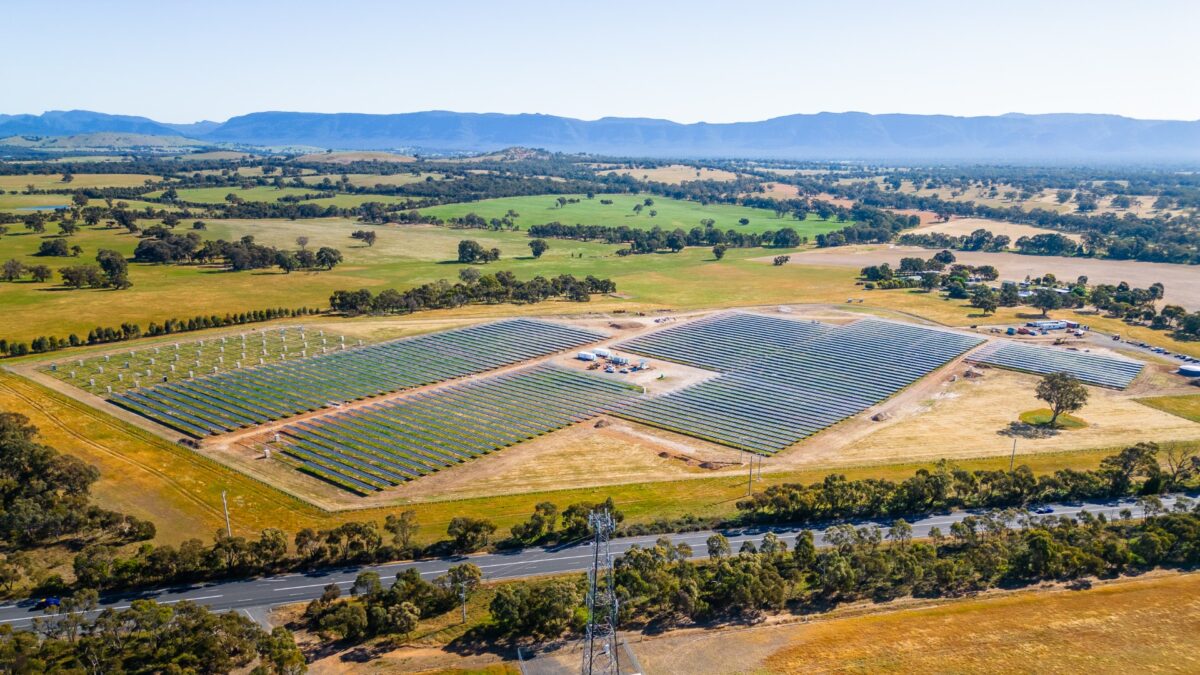The first half of 2023 marked a critical juncture, showcasing the slowest pace of final approvals for new wind and solar farms in the Clean Energy Council’s (CEC) six-year tracking history.
In addition to the sluggish project approvals, persistent transmission challenges, financing obstacles, and community disapprovals continue to limit the green industry from reaching its potential. These setbacks emphasise the urgency for innovative approaches to propel the clean energy sector forward.
Recognising this, the corporate sector’s commitment to the green journey is pivotal in fast-tracking the achievement of the nation’s clean energy targets. Federal Treasurer Jim Chalmers’ draft laws mandating companies to disclose climate-related risks represent a commendable first step, but we must not stop here.
Once enacted, Treasurer Chalmers’ proposed laws will elevate climate reporting to the same level as traditional financial disclosures, a move that will reshape the landscape for investors, banks, and corporations. Nevertheless, it is essential to explore additional measures that can further catalyse the transition to a sustainable and low-carbon future.
I propose that the government consider legislation mandating superannuation funds to invest in a portion of renewable energy initiatives. Industry superannuation funds represent a colossal pool of capital, boasting $3.5 trillion (USD 2.27 trillion) in assets according to the Association of Superannuation Funds of Australia. By directing a fraction of these funds towards clean energy projects, we can unlock billions in private capital, providing a powerful impetus for Australia’s clean energy transition.
This strategic allocation of funds holds the potential to address the challenges faced in meeting renewable energy targets. Not only does it provide financial support for new projects, but it also aligns the superannuation industry with the broader goals of sustainability and environmental responsibility. The financial influence of super funds, when harnessed for clean energy initiatives, can play a pivotal role in accelerating Australia’s shift towards a more sustainable and low-carbon future.
It’s worth mentioning that funds currently see companies that are developing and deploying new technologies or operating in areas of significant public policy change as higher risk. That’s a big reason why new green technologies struggle to attract institutional capital compared to those based on fossil fuels.
The government could amend the best-financial-interest duty so individuals can instruct their funds to invest their money in projects that reduce long-term and systemic financial risks such as climate change. A tax break or a matching contribution from the government could also encourage individuals to choose sustainable investment options.
Additionally, by offering government guarantees, partial assurances on green energy investments made by superannuation funds can effectively mitigate risks, enhancing the attractiveness of such investments while fostering environmentally friendly initiatives.
Introducing targeted tax incentives for superannuation funds and allocating a designated portion of their portfolios to green energy investments could serve as a powerful encouragement for sustainable investment. These incentives might include tax credits, reduced capital gains taxes, or accelerated depreciation specifically tailored for qualifying renewable energy projects.
Treasurer Chalmers’ expressed openness to some of these reforms is an encouraging sign, and indicates a willingness to explore innovative solutions. It’s undeniably imperative to delve deeper into the idea of mandating super funds to invest in renewables. By doing so, we can ensure that Australia maximises the potential of its financial resources, leaving a lasting impact on the trajectory of the nation’s clean energy landscape.
For engineering, procurement, and construction (EPC) firms, the dedicated investment of superannuation funds in renewable energy holds profound significance on a broader scale. Such financial backing not only accelerates the clean energy transition but also serves as a catalyst for substantial growth within the EPC sector.
The infusion of capital into renewable projects not only ensures a steady pipeline of opportunities but also fosters innovation and technological advancements. As EPC firms play a pivotal role in the development and execution of renewable energy projects, a reliable and substantial source of funding enhances their capacity to meet the increasing demand for sustainable infrastructure.
In light of the urgent need for federal policy reform, unlocking more superannuation for green investment becomes a necessity. This approach harnesses the power and preferences of individual members, aligning financial decisions with environmental goals. By taking bold steps to redirect superannuation funds towards renewable projects, Australia can not only address climate impacts but also contribute significantly to a more sustainable and resilient future.
Author: Brenton Moratto, co-founder, ACLE Services
The views and opinions expressed in this article are the author’s own, and do not necessarily reflect those held by pv magazine.
This content is protected by copyright and may not be reused. If you want to cooperate with us and would like to reuse some of our content, please contact: editors@pv-magazine.com.








By submitting this form you agree to pv magazine using your data for the purposes of publishing your comment.
Your personal data will only be disclosed or otherwise transmitted to third parties for the purposes of spam filtering or if this is necessary for technical maintenance of the website. Any other transfer to third parties will not take place unless this is justified on the basis of applicable data protection regulations or if pv magazine is legally obliged to do so.
You may revoke this consent at any time with effect for the future, in which case your personal data will be deleted immediately. Otherwise, your data will be deleted if pv magazine has processed your request or the purpose of data storage is fulfilled.
Further information on data privacy can be found in our Data Protection Policy.